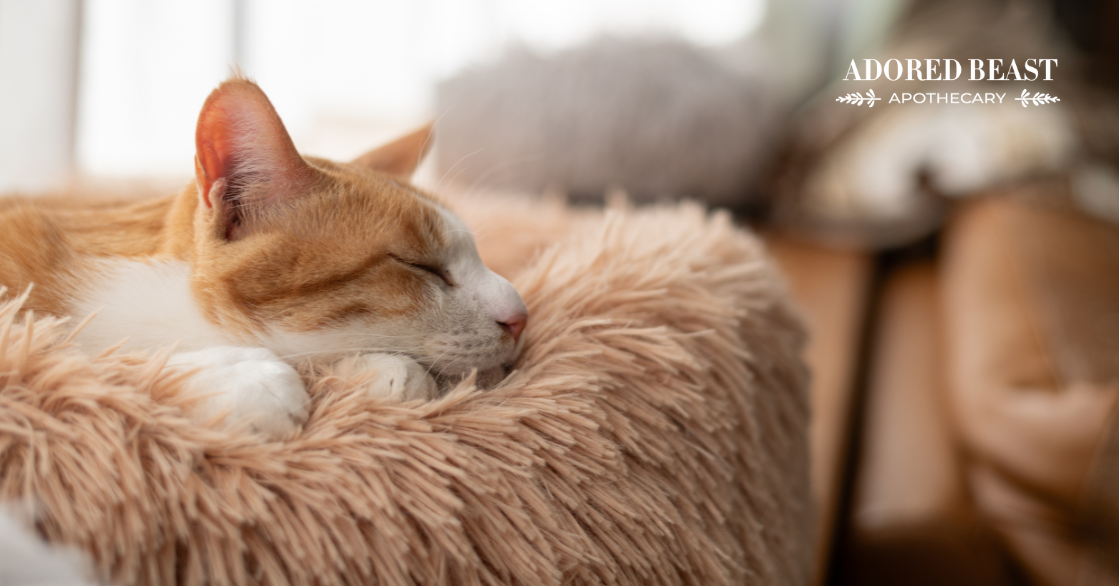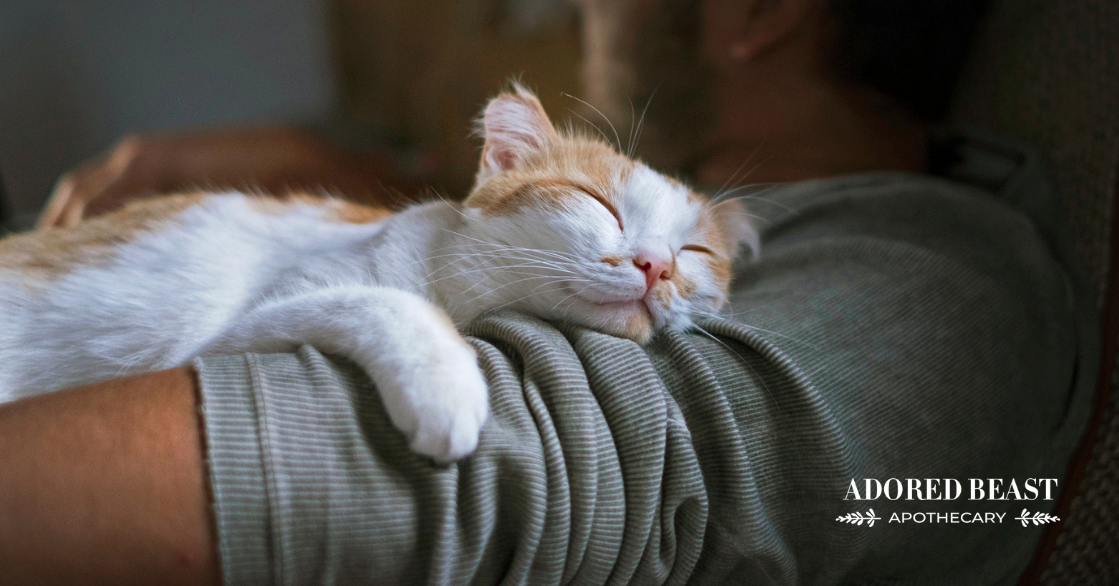Epilepsy, a neurological disorder that leads to recurring seizures, can affect not only humans but also our beloved pets, including cats. Feline epilepsy, while less common than in dogs, can still be a challenging condition for both you and your cat. If your cat has ever had an episode, you know how scary it can be.
Knowing what epilepsy is, recognizing the symptoms, understanding potential causes, and learning how to manage and support a cat with epilepsy can help make life easier and safer for your furry friend.
What is Feline Epilepsy?
Feline epilepsy refers to a condition in which a cat experiences repeated seizures, which are sudden, involuntary episodes of abnormal electrical activity in the brain. These episodes can vary in severity, from brief moments of unusual behaviour to full-blown convulsions. The frequency of seizures can also differ widely; some cats may experience them occasionally, while others may have seizures more frequently.
Epilepsy in cats is usually categorized as:
- Primary (Idiopathic) Epilepsy: The cause is unknown and no underlying brain abnormality is found. This type is relatively rare in cats and is often genetic.
- Secondary (Symptomatic) Epilepsy: This is due to an identifiable underlying cause, such as trauma, an infection, or a brain tumor.
Symptoms of Epilepsy in Cats
The symptoms of a seizure can vary, depending on its severity. However, seizures typically occur in three phases:
- Pre-Ictal Phase (Aura): This is the stage leading up to a seizure. Cats may show signs of anxiety, seek attention, vocalize, hide, or become unusually clingy. This phase may last a few seconds or several minutes.
- Ictal Phase (Seizure): During the seizure itself, cats may display any of the following symptoms:
- Muscle twitching or jerking
- Stiffening of limbs
- Loss of consciousness or “spacing out”
- Drooling or excessive salivation
- Involuntary urination or defecation
- Paddling of the limbs or repeated rhythmic movements
- Post-Ictal Phase (Recovery): After the seizure, cats may appear disoriented, confused, tired, or even temporarily blind. This phase can last anywhere from a few minutes to several hours, depending on the severity of the seizure.
Causes of Feline Epilepsy
While we know that the cause of idiopathic feline epilepsy is largely unknown, several factors can trigger symptomatic epilepsy or cause seizures in cats, including:
- Genetic Predisposition: Though rare, some cats may have a genetic predisposition to idiopathic epilepsy, meaning they are born with a tendency to have seizures without a clear underlying cause.
- Brain Injury or Trauma: Head injuries can damage the brain and increase the likelihood of seizures.
- Infections and Diseases: Certain infections, such as feline infectious peritonitis (FIP), feline immunodeficiency virus (FIV), or toxoplasmosis, can impact brain function and lead to seizures.
- Brain Tumors: Tumors, especially in older cats, can press on brain tissues and cause seizures.
- Toxins: Exposure to toxins, such as insecticides, antifreeze, certain plants, or human medications, can lead to neurological damage and cause seizures.
- Metabolic Disorders: Low blood sugar (hypoglycemia), liver or kidney disease, and other metabolic imbalances can trigger seizures.
[RELATED] Epilepsy is more common in dogs. Here’s how to help your pooch!
What to Do When Your Cat Has a Seizure
Witnessing your cat have a seizure can be frightening, but knowing how to respond can help keep both you and your cat safe. Here are some steps to follow if your cat experiences a seizure:
- Stay Calm: Cats are sensitive to their surroundings, and staying calm can help avoid adding stress to an already intense moment. Keep in mind that seizures are often brief, lasting only a minute or two.
- Do Not Touch or Move Your Cat: Avoid touching your cat unless absolutely necessary, as they may involuntarily bite or scratch due to muscle spasms. Instead, clear the area around them of any objects they might hit to prevent injuries.
- Dim the Lights and Minimize Noise: Loud noises and bright lights can worsen the seizure or cause further disorientation afterward. Try to create a quiet, dim environment to reduce sensory stimuli.
- Time the Seizure: If possible, note the length of the seizure. Seizures that last more than 5 minutes are considered emergencies and require immediate veterinary assistance.
- After the Seizure, Offer Comfort and Space: Once the seizure subsides, your cat may be disoriented or scared. Provide a calm and quiet space for them to recover, and offer gentle reassurance without overwhelming them. Also, offer them food. They’ll be really hungry because seizures take a lot of energy! Give small amounts or their regular food, slowly.
How to Support a Cat with Epilepsy
Managing epilepsy in cats often involves both medical treatment and lifestyle adjustments. Here’s how you can support your cat if they have been diagnosed with epilepsy:
- Veterinary Care: If your cat has never had a seizure before, and you’re unsure about the cause, a trip to the vet might be a good idea. Your veterinarian will perform tests to identify the cause of the seizures.
- Diet: You want to feed the highest-quality food you can. Opt for a balanced, fresh food diet, with plenty of natural sources of vitamins and minerals. Avoid potential allergens or additives.
- Supplements: Certain supplements may support neurological health. These include omega-3 fatty acids, antioxidants (like vitamin E or C), MCT oil, lion’s mane mushrooms, and herbal remedies like valerian root or chamomile. If your vet prescribes medication, it’s also really important to support the liver! There’s a ton of research into CBD oil for pets with epilepsy – it has shown promise in reducing seizure frequency. Arnica, aconite, and belladonna are really helpful after a seizure. Find a homeopath if you have questions. (Keep Your Go 2 on hand!!).
- Monitor Seizure Activity: Keep a log of each seizure, including the date, time, duration, and any unusual behaviours you notice before and after the episode. This information can help your veterinarian adjust your cat’s treatment plan.
- Maintain a Consistent Routine: Cats with epilepsy benefit from consistency. Sudden changes in routine, new stressors, or environmental shifts may increase the risk of seizures. Try to keep feeding, playtime, and other routines consistent to help your cat feel secure.
- Provide a Safe and Calm Environment: Create a safe space where your cat can rest without the risk of injuring themselves if a seizure occurs. Avoid using harsh cleaning chemicals, as some contain toxins that could trigger seizures. Remove access to potential toxins, like certain plants, human medications, or insecticides.
- Limit Stress and Excitement: Minimize stress-inducing factors, such as loud noises, sudden changes, or introducing new pets. Cats with epilepsy often do better in low-stress environments, so providing a peaceful home can be beneficial.
- Educate Friends and Family: Make sure everyone in your household is aware of your cat’s condition and understands what to do (and what not to do) if they witness a seizure. This ensures your cat receives consistent care and helps prevent accidents.
Feline epilepsy can be a challenging condition, but with the right support, many cats can still lead happy, comfortable lives. Understanding the symptoms, causes, and treatment options can empower you to care for your cat through their episodes and provide a safe, supportive environment. By working closely with your veterinarian, monitoring your cat’s health, and making adjustments to their lifestyle, you can help manage their epilepsy and improve their quality of life.












